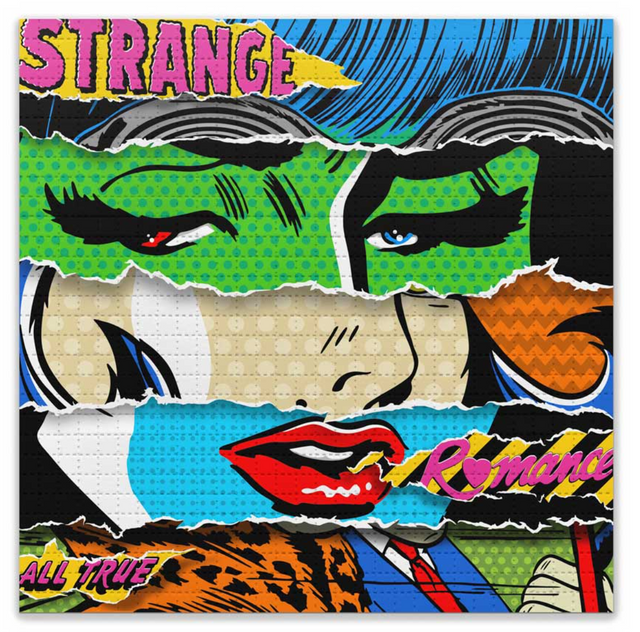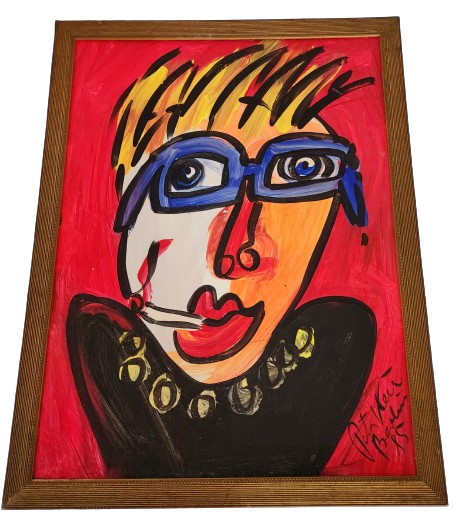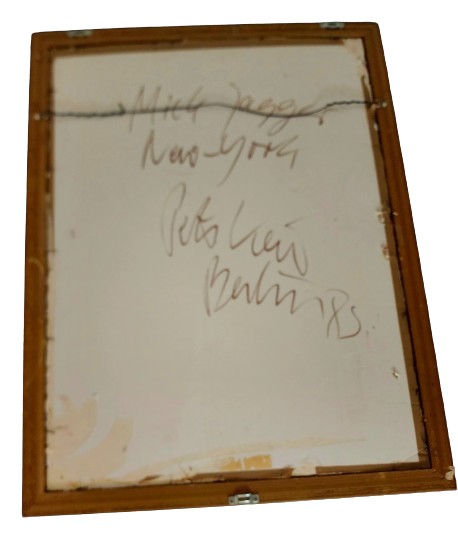
Face & Head


Peter Keil Mick Jagger New York Original Oil Painting by Peter Keil
Mick Jagger New York Original Oil Painting by Peter Keil One of a Kind Artwork on Foam Board Framed Panel by The Wild Man of Berlin, a Famous Contemporary Artist. 1985 Signed by Peter Keil & Dated Oil Painting on Masonite Panel Original Artwork Size 28.5x37.5. All of Peter Keil's Art Used Thick Paint & Some Paint Flaking May Be Present Due to the Age and Nature of His Work. Painting of Rolling Stones Mick Jagger Head & Face Smoking a Cigarette. The Foam Panel is Bowing Inward Out The Back of the Frame and hangs Slightly Off the Wall. Capturing the Iconic: Peter Keil's Portrayal of Mick Jagger Peter Keil's "Mick Jagger New York" is an original oil painting that captures the essence of one of rock and roll's most iconic figures. Created in 1985 and framed on a foam board panel, this piece represents Keil's vibrant and expressionistic style. The artwork, signed and dated by the artist known as The Wild Man of Berlin, measures 28.5 x 37.5 inches, reflecting Keil's penchant for creating bold art. Within the pop art tradition, Keil's depiction of the Rolling Stones' lead singer is a perfect amalgam of celebrity culture and artistic innovation. The use of thick, textured paint is typical of Keil's technique, adding depth and intensity to the image of Mick Jagger, portrayed with a cigarette elegantly dangling from his lips. The potential presence of paint flaking adds a dimension of authenticity and history to the piece, speaking to the natural aging process of Keil's chosen mediums and the enduring nature of his works. The painting is more than a mere likeness of the famed musician; it is a narrative piece that conveys Jagger's persona's raw charisma and enduring legacy. Keil's use of color and form breaks from conventional portraiture, instead providing a window into the subject's soul, capturing the essence of Jagger's public and private personas. In the broader context of street pop art and graffiti artwork, Keil's painting stands out for its embrace of pop culture icons and its ability to translate that into a fine art context. The work aligns with the spirit of street art, which often appropriates popular imagery to make statements about society, fame, and the passage of time. Keil's painting does this with reverence and creativity, ensuring that "Mick Jagger New York" is not just a portrait but a piece of cultural history. In essence, Keil's work is a testament to the fusion of street art sensibilities with the sophistication of fine art. His portrayal of Mick Jagger is imbued with a sense of immediacy and intimacy, often the hallmark of the best street-inspired art. Through this painting, Keil continues to challenge and expand the boundaries of contemporary art, securing his place as a pivotal figure in the evolution of pop art and its intersection with street aesthetics.
$2,500.00



